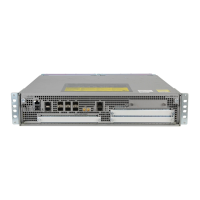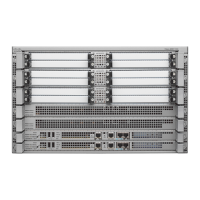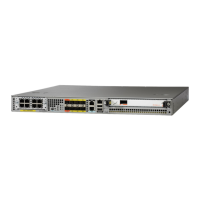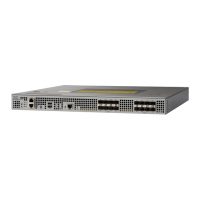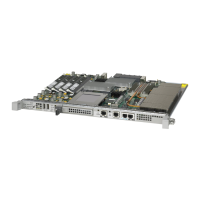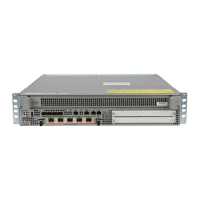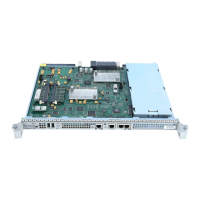Site Cabling Guidelines
This section contains guidelines for wiring and cabling at your site. When preparing your site for network
connections to the Cisco ASR 1001-X Router, consider the type of cable required for each component, and
the cable limitations. Consider the distance limitations for signaling, EMI, and connector compatibility.
Possible cable types are fiber, thick or thin coaxial, foil twisted-pair cabling, or unshielded twisted-pair cabling.
Also consider any additional interface equipment you need, such as transceivers, hubs, switches, modems,
channel service units (CSUs), or data service units (DSUs).
Before you begin, read this important note about cabling:
The E1 interface on the Cisco 8-Port Channelized T1/E1 SPA interface uses RJ-48c receptacles for E1
(120-ohm) cables with RJ-45 connectors. You can use all the ports simultaneously. Each E1 connection
supports interfaces that meet the G.703 standards. The RJ-45 connection does not require an external transceiver.
The E1 ports are E1 interfaces that use 120 ohm-shielded twisted-pair (STP) cables.
Shielded-twisted pair T1/E1 cables must be used with the 8-port channelized T1/E1 SPA interfaces in any
Cisco ASR 1000 chassis. This is required for Compliance with Class A emissions requirements for EMC.
Danger
Shielded-twisted pair T1/E1 cables must be used with any of the T1/E1 NIM interfaces in any Cisco ASR
1000 chassis. This is required for Compliance with Class A emissions requirements for EMC.
Danger
Before you install the Cisco ASR 1001-X Router, have all the additional external equipment and cables at
hand. For ordering information, contact a Cisco customer service representative.
The extent of your network and the distances between network interface connections depend in part on the
following factors:
•
Signal type
•
Signal speed
•
Transmission medium
The distance and rate limits referenced in the following sections are the IEEE-recommended maximum speeds
and distances for signaling purposes. Use this information as guidelines when planning your network
connections >prior to installing the Cisco ASR 1001-X Router.
If wires exceed recommended distances, or if wires pass between buildings, give special consideration to the
effect of a lightning strike in your vicinity. The electromagnetic pulse caused by lightning or other high-energy
phenomena can easily couple enough energy into unshielded conductors to destroy electronic devices. If you
have had problems of this sort in the past, you may want to consult experts in electrical surge suppression and
shielding.
Console Port Connections
The Cisco ASR 1001-X Router provides console and auxiliary ports to connect a terminal or computer for
local console access.
Cisco ASR 1001-X Router Hardware Installation Guide
35
Preparing Your Site for Installation
Site Cabling Guidelines

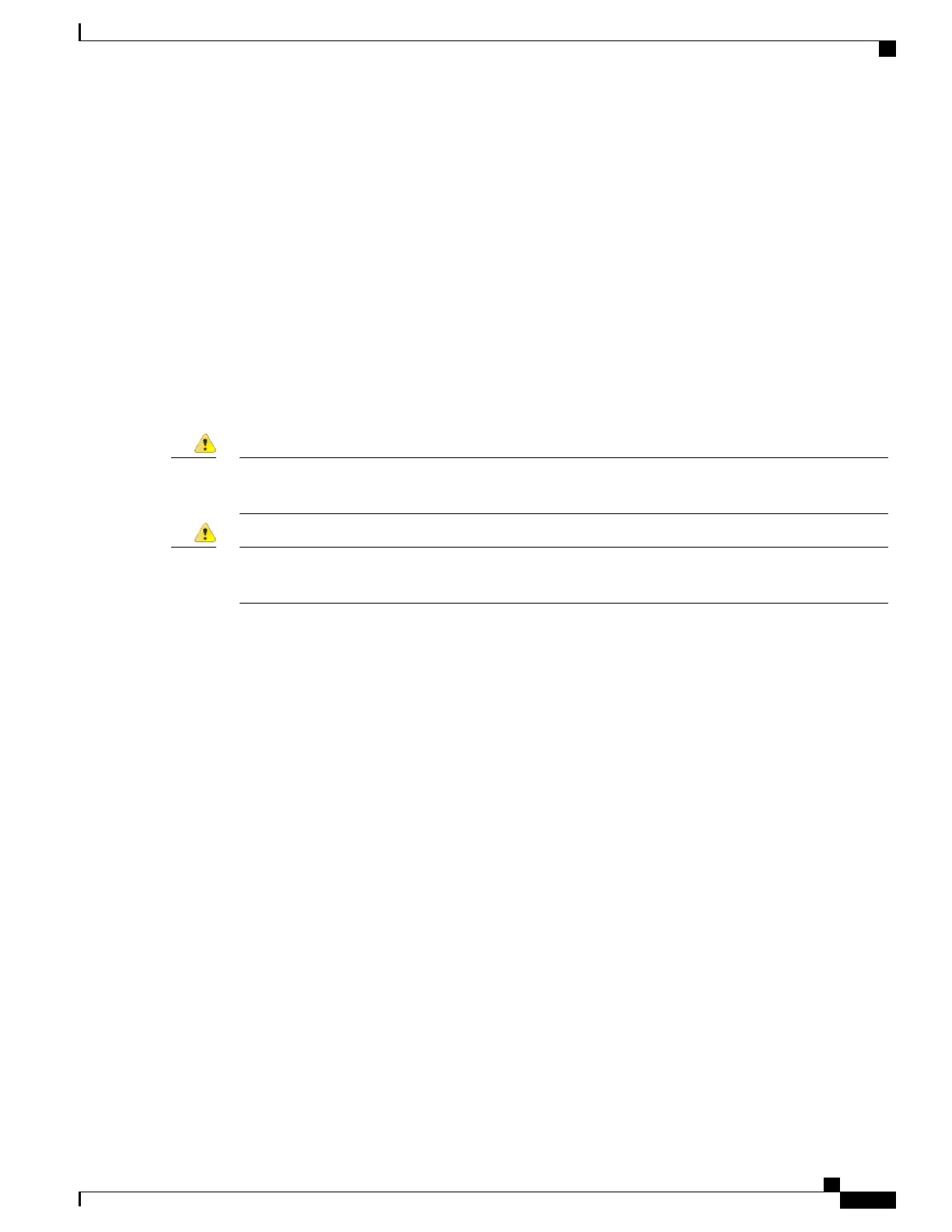